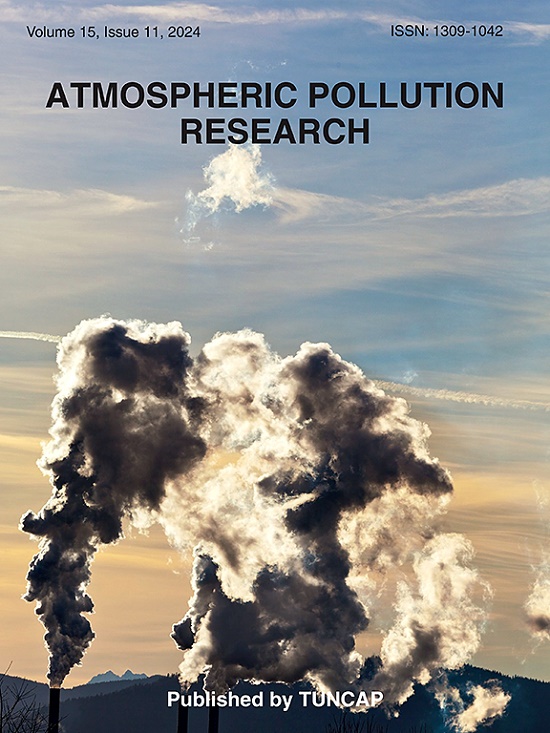Integrated monitoring of road traffic and airborne ultrafine particles at a camera-equipped urban intersection
IF 3.9
3区 环境科学与生态学
Q2 ENVIRONMENTAL SCIENCES
引用次数: 0
Abstract
This study investigated ultrafine particle concentrations at a busy intersection in Braunschweig, Germany, highlighting the influence of traffic as the primary source of elevated ultra-fine particle (UFP) concentrations. A mobile lab, equipped with online instruments for combustion gases and aerosols (SMPS, EEPS) was operated near to the intersection. By coupling a high-resolution particle size spectrometer with a catalytic stripper, it effectively characterized short-lived traffic-related particle events, outperforming traditional methods in resolving high-emission events. While total concentrations of particles with diameters between 4 nm and 3 μm were in the range of 6,000 #/cm3 at low-traffic night hours, peak concentrations up to 3∗106 #/cm3 (10–20 s duration) could be observed under heavy traffic conditions. During daytime traffic, approximately 10 %–30 % of particles could not be evaporated at 350 °C. Traffic analysis was performed on a four-lane intersection equipped with 14 vertical stereo-camera-systems that allows a precise characterization of the traffic situation. While combining high-resolution particle measurements with a camera system showed potential for classifying transport modes, challenges such as limited differentiation between emission sources and complex data interpretation reduced its overall effectiveness compared to conventional methods.
在配备摄像头的城市十字路口,对道路交通和空气中超细颗粒进行综合监测
这项研究调查了德国不伦瑞克一个繁忙十字路口的超细颗粒浓度,强调了交通作为超细颗粒(UFP)浓度升高的主要来源的影响。一个配备了燃烧气体和气溶胶在线仪器(SMPS, EEPS)的移动实验室在交叉路口附近运行。通过将高分辨率粒径谱仪与催化剥离器相结合,该方法有效地表征了与交通相关的短时间颗粒事件,在解决高排放事件方面优于传统方法。在夜间低流量时,直径在4 nm ~ 3 μm之间的颗粒总浓度在6000 #/cm3范围内,而在繁忙的交通条件下,可观察到峰值浓度高达3∗106 #/cm3(持续时间为10 ~ 20 s)。在白天的交通中,约有10% - 30%的颗粒在350°C下不能蒸发。交通分析是在一个四车道交叉路口进行的,配备了14个垂直立体摄像系统,可以精确地描述交通状况。虽然将高分辨率粒子测量与相机系统相结合显示了分类运输模式的潜力,但与传统方法相比,诸如排放源之间的有限区分和复杂的数据解释等挑战降低了其整体有效性。
本文章由计算机程序翻译,如有差异,请以英文原文为准。
求助全文
约1分钟内获得全文
求助全文
来源期刊

Atmospheric Pollution Research
ENVIRONMENTAL SCIENCES-
CiteScore
8.30
自引率
6.70%
发文量
256
审稿时长
36 days
期刊介绍:
Atmospheric Pollution Research (APR) is an international journal designed for the publication of articles on air pollution. Papers should present novel experimental results, theory and modeling of air pollution on local, regional, or global scales. Areas covered are research on inorganic, organic, and persistent organic air pollutants, air quality monitoring, air quality management, atmospheric dispersion and transport, air-surface (soil, water, and vegetation) exchange of pollutants, dry and wet deposition, indoor air quality, exposure assessment, health effects, satellite measurements, natural emissions, atmospheric chemistry, greenhouse gases, and effects on climate change.
 求助内容:
求助内容: 应助结果提醒方式:
应助结果提醒方式:


